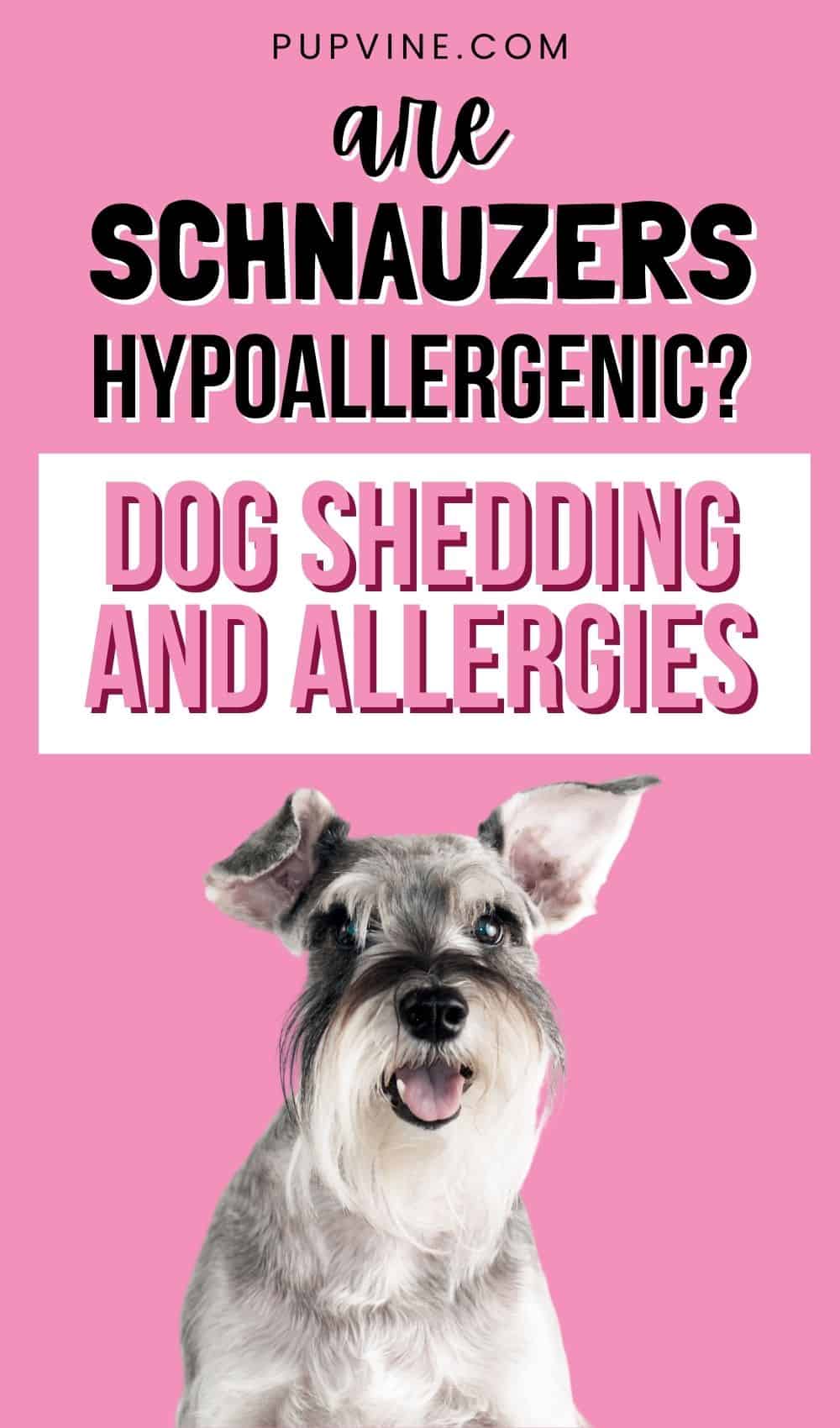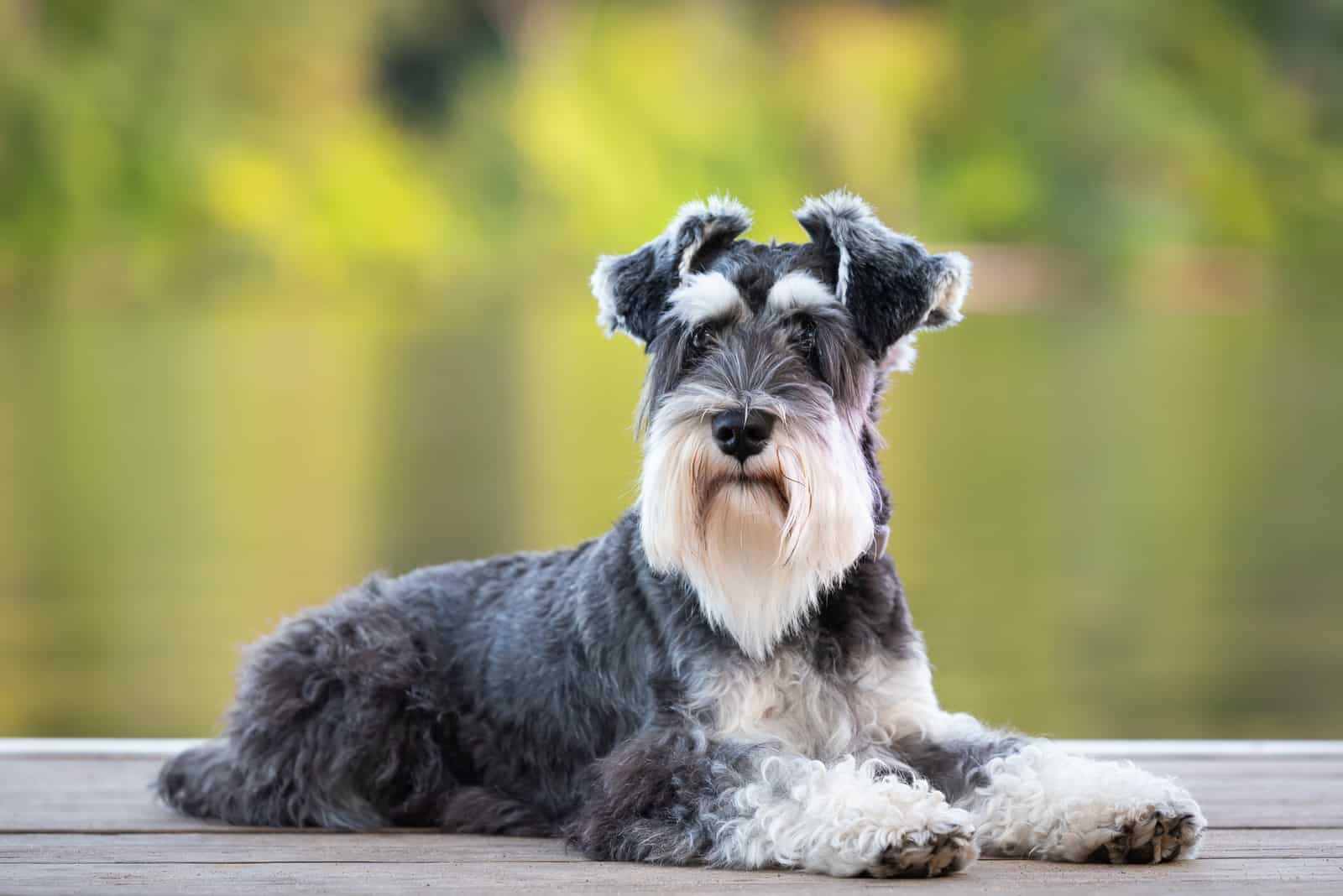Are Schnauzers hypoallergenic? First, the good news: yes, Schnauzers are listed as a hypoallergenic dog breed!
However, you’re probably asking about this because either you or someone in your home (or a frequent visitor) suffers from allergies. Pet allergies are annoying and inconvenient, but for some allergy sufferers, they can be serious – even life-threatening.
Whatever the case, most of us want to limit the risk of an allergic reaction to our pets. We seek out dog breeds that are listed as hypoallergenic, often with the understanding that this means that our new canine companion will be allergy-free. But this is where the possible bad news comes in: there is no such thing as an allergy-free dog. No matter what you might read on the internet, and no matter who says it, such a thing does not exist.
We’ll explain this further along as we take a look at the Schnauzer in detail.
What Does Hypoallergenic Mean?
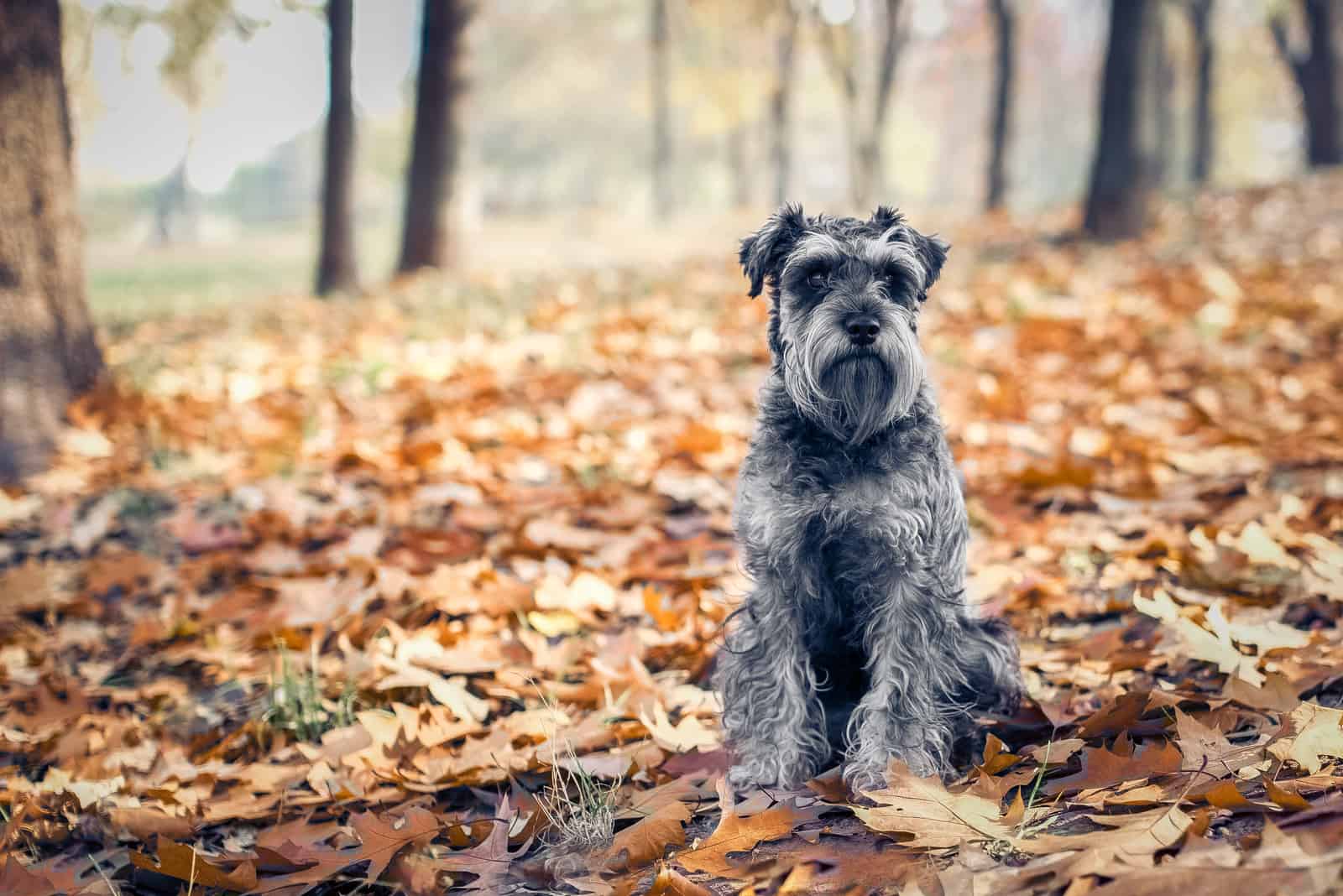
This term has been misunderstood and perhaps misused by some breeders who want to tap into the demand for low-allergy dogs.
Over the years, this word has been used to imply that something (in this case, a dog) does not cause an allergic reaction. In fact, what it actually means is that there is a reduced risk of an allergic reaction. This has caused confusion for many years, but people are gradually learning the true meaning as word spreads across the globe.
So, when someone shouts, “Hypoallergenic dogs don’t exist!” They are usually referring to the fact that all dogs produce allergens. The fact is, hypoallergenic dogs do exist in the sense that some breeds are less likely to provoke an allergic reaction than others.
Let’s look at the science behind this.
Some humans are allergic to dogs. Or, more accurately, they are allergic to proteins that the dog produces. These proteins are found in the dog’s saliva, dander (dry flakes of skin), and urine. Dogs often lick their coats, which transfers saliva onto the hair and skin. The dog then sheds hair and dander around the home at certain times, and these stick to our clothes and furniture. When we touch these, the allergens rub off onto our skin. Pet dander can also be microscopic, floating around our homes and entering our noses and mouths.
Sadly, our immune systems sometimes see these proteins as being harmful. They go into overdrive, thinking that they are protecting us. We start sneezing, our eyes itch, our skin becomes red and itchy, and sometimes our throats swell. This isn’t anything to do with the allergens themselves but is entirely down to the immune system overreacting.
No wonder people are looking for hypoallergenic breeds! In recent years, the Poodle has been praised for its hypoallergenic coat, almost to the exclusion of all other breeds. This is hardly fair, though, as there are others that are just as allergy-friendly, such as the Bichon Frise and Maltese dog.
So, in relation to our question, Are Schnauzers hypoallergenic? We can confirm that they are indeed.
The Schnauzer Breed
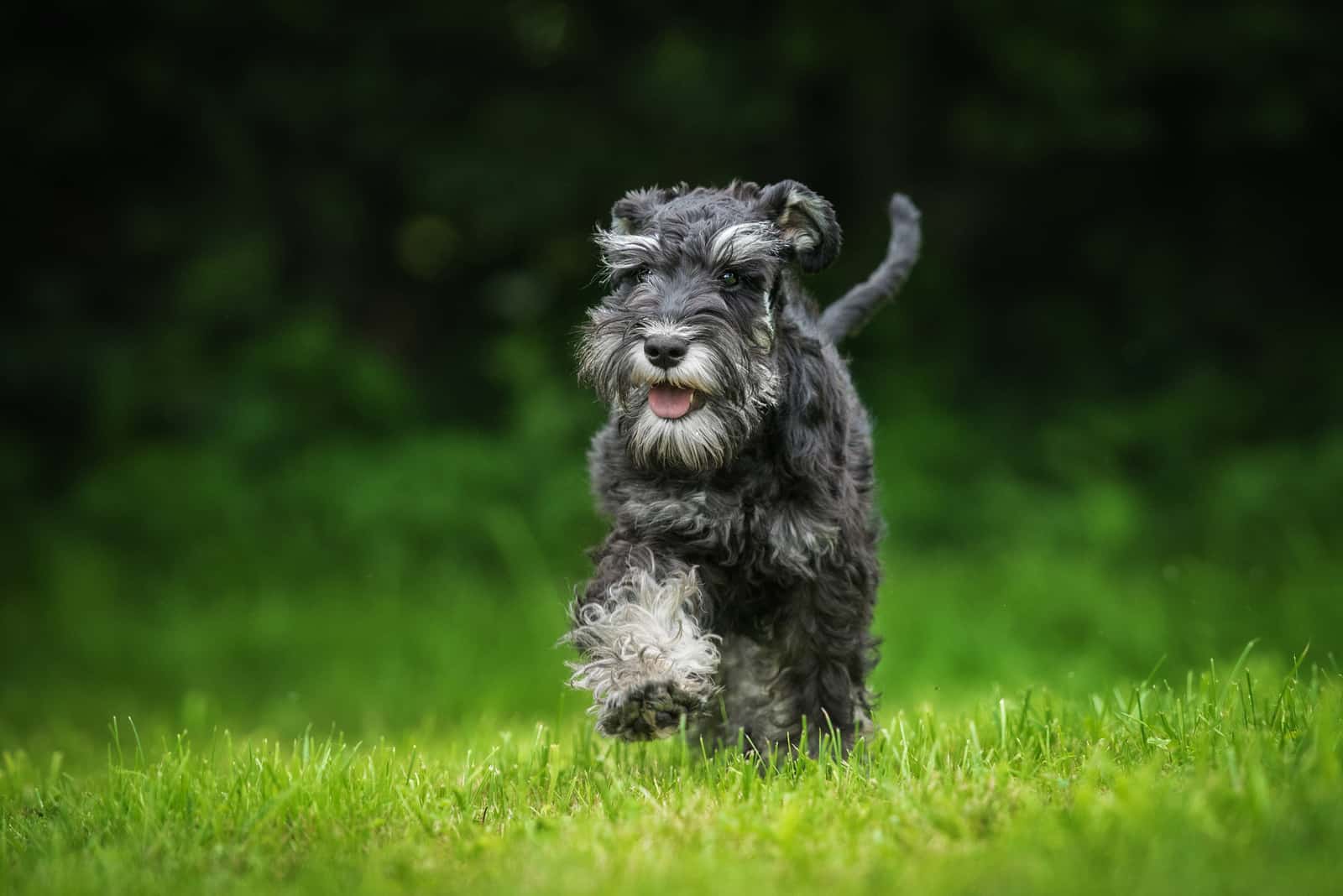
The Schnauzer originated in Germany as a ratter (rat-catcher) and watchdog. Its name is a colloquial German term meaning ‘whiskered snout’ referring to the Schnauzer’s long beard.
There are three official breeds: the Standard Schnauzer, Giant Schnauzer, and the Miniature Schnauzer. You will see toy and teacup versions sold as separate breeds, but these are usually just under-sized or poorly-bred dogs. They are not separate breeds and should not be listed as such. Beware of buying one of these as there is a chance that they are the result of the breeding of two runts, which can produce a weak and sickly pup with a host of health problems.
This table, as well as the Miniature Schnauzer growth chart, will help give an idea of the size differences between the three official breeds:
[table id=62 /]
As you can see, there’s quite a difference between the smallest and the biggest!
Finding Your Schnauzer Puppy
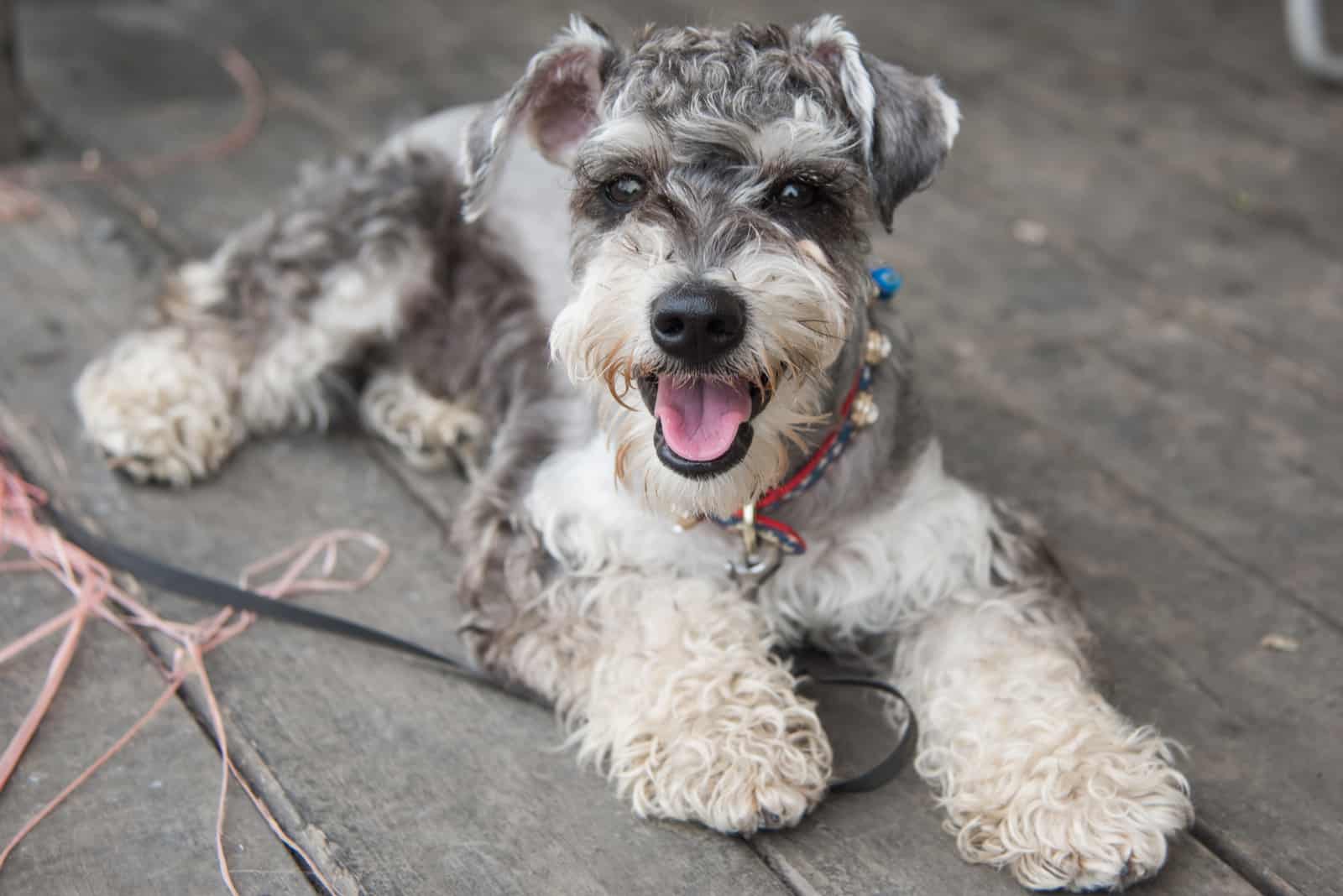
These little beauties are unbelievably cute. A word of warning, though – these guys will poke their furry noses into every corner as soon as they possibly can! They want to know about everything.
As soon as you get your pup, it’s your job to teach them what’s what.
They are lively and excitable, as you’d expect puppies to be. Their antics will make you laugh and melt your heart in equal measure. However, you need to be firm with them and start their training as soon as you can. They are keen to please you and will respond well to reward-based training.
You can choose to buy your pup from a breeder – and there are plenty of them out there because these dogs are so popular – or you can adopt. Yes, sadly, these dogs find their way into rescue centers. These are more likely to be older dogs rather than puppies, though. The benefit of this is that your new dog will cost significantly less and will probably be spayed/neutered, microchipped, and housetrained.
Be sure to do your research and find a reputable breeder. Check online forums and get recommendations from Schnauzer owners. Avoid anything that you suspect is a puppy mill or a scam. These places are run purely for profit and have a reputation for mistreating the dogs and keeping them in inhumane conditions. Your puppy will most likely have more than its share of health issues.
Reputable breeders will be open and honest about their business. They will welcome any questions you have and work with you to find the dog you want. The biggest problem you are likely to face is a waiting list, depending on demand and the number of breeders in your local area.
Take your time, and use your common sense. You’ll soon have your hypoallergenic fur-ball bouncing around your home.
Read More: Standard Schnauzer Breeders: The Best 5 Breeders Of 2022!
Do Schnauzers Cause Allergies?
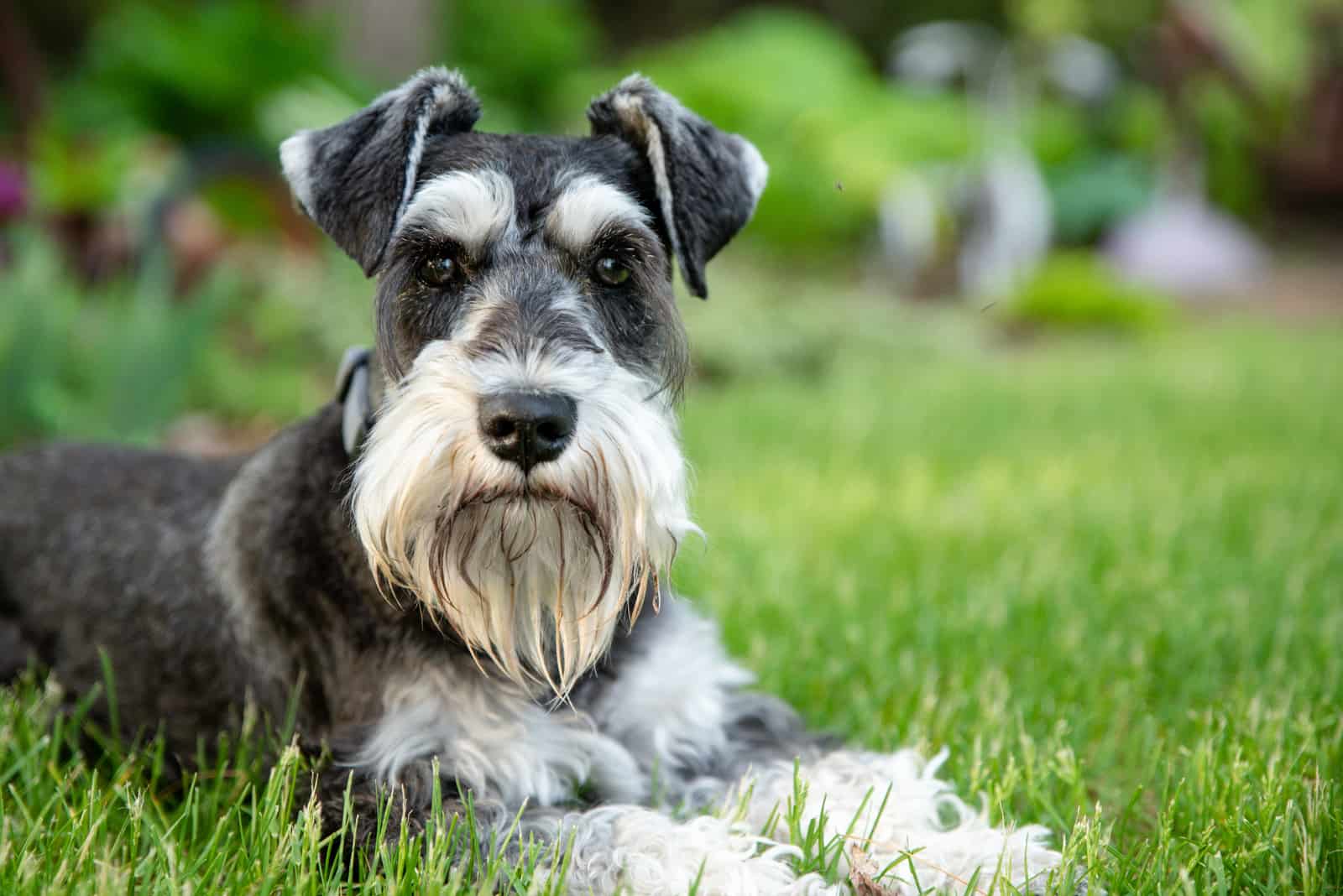
Not as much as some other dogs. We’ve already discussed the meaning of the word hypoallergenic, so we have a better idea of what it means.
So, why don’t Schnauzers trigger allergies like other dogs? As we saw earlier, dog saliva and dander are the main carriers of allergens. The Schnauzer is known to be a low-shedder, doesn’t produce much dander, and is not likely to drool.
It’s important to stress that there are no guarantees. You still might have an allergic reaction to a Schnauzer, but the risk is lower than with some other breeds.
They are classed as having a low tendency to drool, but when they eat and drink, they may get saliva caught in those magnificent whiskers. It’s always best to give this a wipe after they finish eating, just to keep it clean and get rid of any traces of saliva. If you find that these whiskers become a nuisance and a hindrance, then feel free to trim them back. They’re only essential if you plan on using your pooch as a show dog.
The Schnauzer’s skin is naturally oily, which keeps it soft and stops it from drying out. This is why they don’t produce as much dander as other breeds. However, they are prone to some health conditions that may cause skin complaints. This is all relevant to our main question, Are Schnauzers hypoallergenic? as it explains in detail just why this feisty little dog is one of the best choices for allergy sufferers.
What Type Of Coat Do Schnauzers Have?
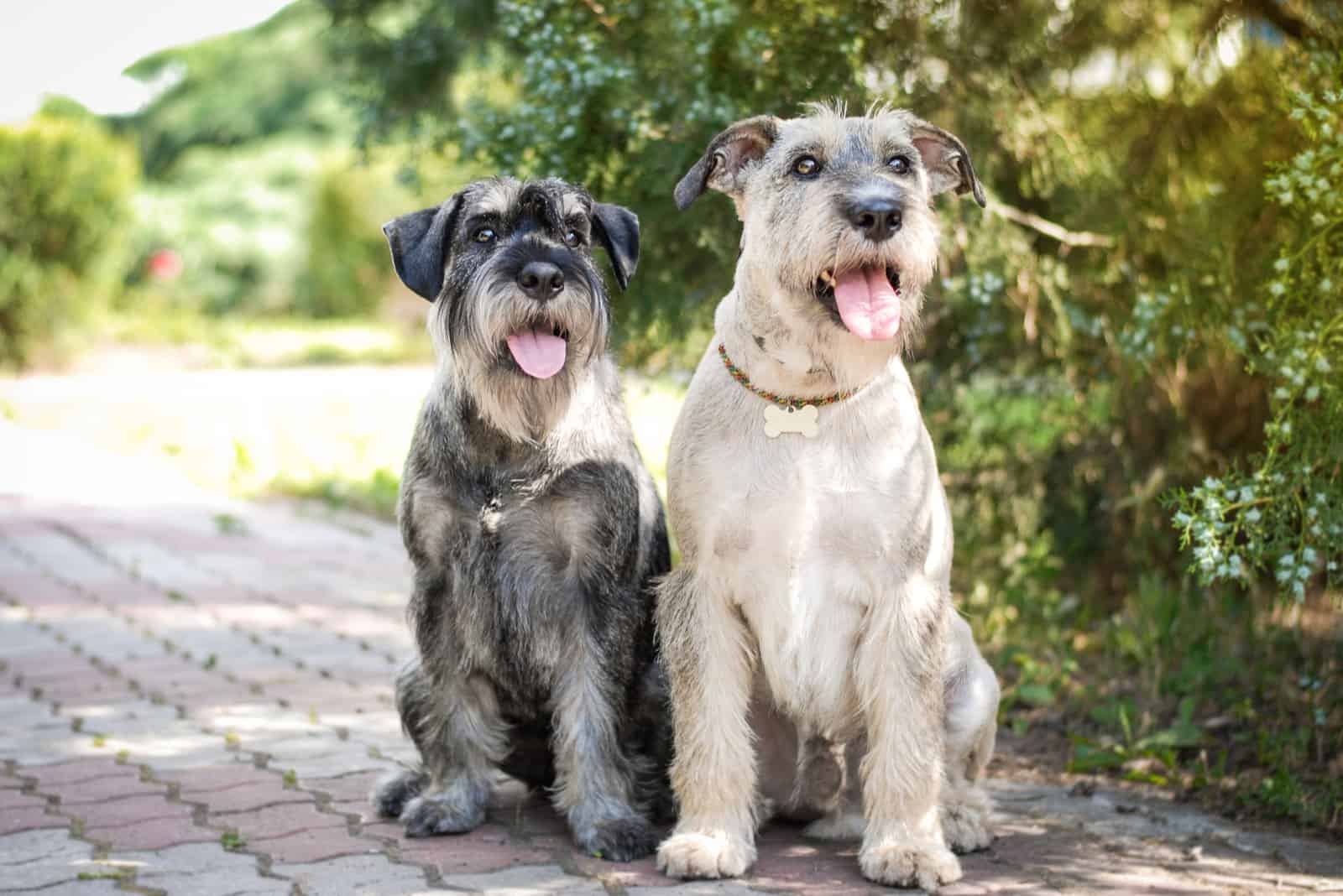
All three breeds have a double coat consisting of a wiry topcoat and furry undercoat.
The outer coat is made from coarse guard hairs that protect the dog from the weather, while the undercoat acts as insulation to keep the dog warm.
This coat comes in a range of colors, including salt and pepper, black, black and silver, and white. This last color is a controversial subject among enthusiasts in North America as the American Kennel Club (AKC) and Canadian Kennel Club dispute its origins, which means that white Schnauzers are disqualified from shows.
Another slightly controversial topic is hand stripping. As Schnauzers don’t shed easily, many owners hand-strip the undercoat. This entails the use of a special tool to literally pull the soft fur out.
Many of these fine hairs are still embedded in the follicle, although they are technically dead. The general consensus is that this is not a painful process and would happen naturally in the past when these were working dogs.
Professional groomers should be able to do this for you, and you’ll need to book a session every 6 to 8 weeks. You can do it yourself, but you must learn how to do it properly to get the right results.
It’s really a matter of personal choice, but you will be expected to hand-strip your Schnauzer if you are rearing a show-quality dog.
Many Schnauzer owners simply want a family dog and aren’t interested in the fussiness and etiquette surrounding show dogs, so they will clip their dog instead. This will alter the appearance of the coat and may even change the color over time. But it doesn’t change their friendly and spirited nature, so it won’t be a problem!
Either way, whether stripping or clipping, it’s up to you, but it’s worthwhile doing one or the other unless you want a very shaggy-looking dog. Even so, they are still suitable for those with mild allergies, as we’ve seen in our quest to discover the answer to our question, Are Schnauzers hypoallergenic?
Do Schnauzers Shed A Lot?
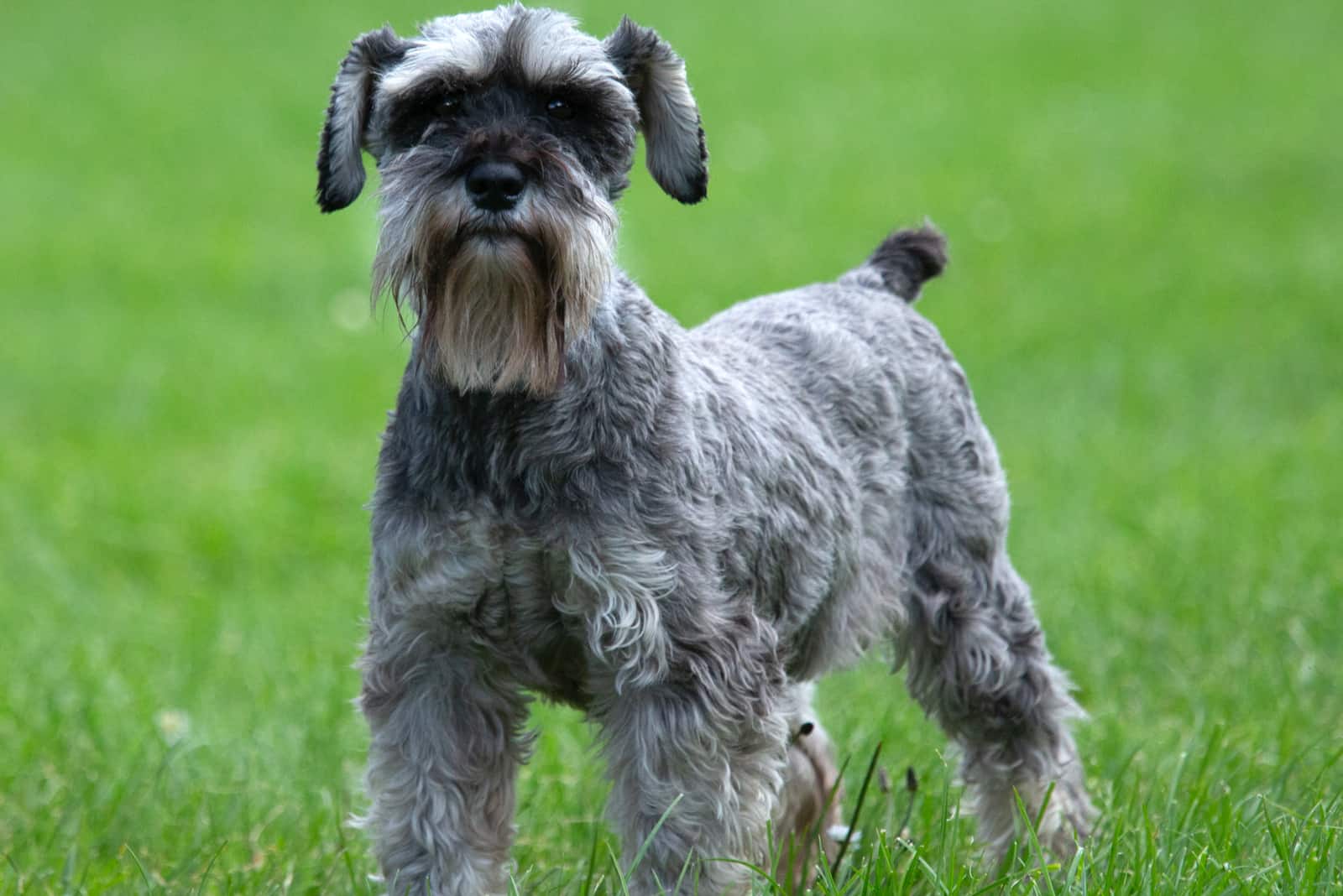
No, they don’t shed much at all.
All dogs shed to some extent, even the ‘hairless’ Chinese Crested dog! It’s just that most dogs shed seasonally, especially double-coated dogs. During spring and fall, you usually see a massive increase in the amount of hair that your dog sheds. But not the Schnauzer! Some owners will even claim that their Schnauzer doesn’t shed at all. However, this is not true. They are low-shedding dogs, but not non-shedding. Once again, this latter term has been used so much that it is widely believed.
What’s really happening is that the loose, dead hair has become trapped in the coat and needs brushing out. People who say that their Schnauzer doesn’t shed are probably doing such a great job of grooming their beloved pooch that they have virtually eliminated the problem.
This playful and fearless dog, with its characteristic mustache, has the edge when it comes to being the best dog for allergy sufferers. But with a little effort on your part, you can lend a helping hand.
The following section shows how to do this.
Tips On How To Manage Dog Hair
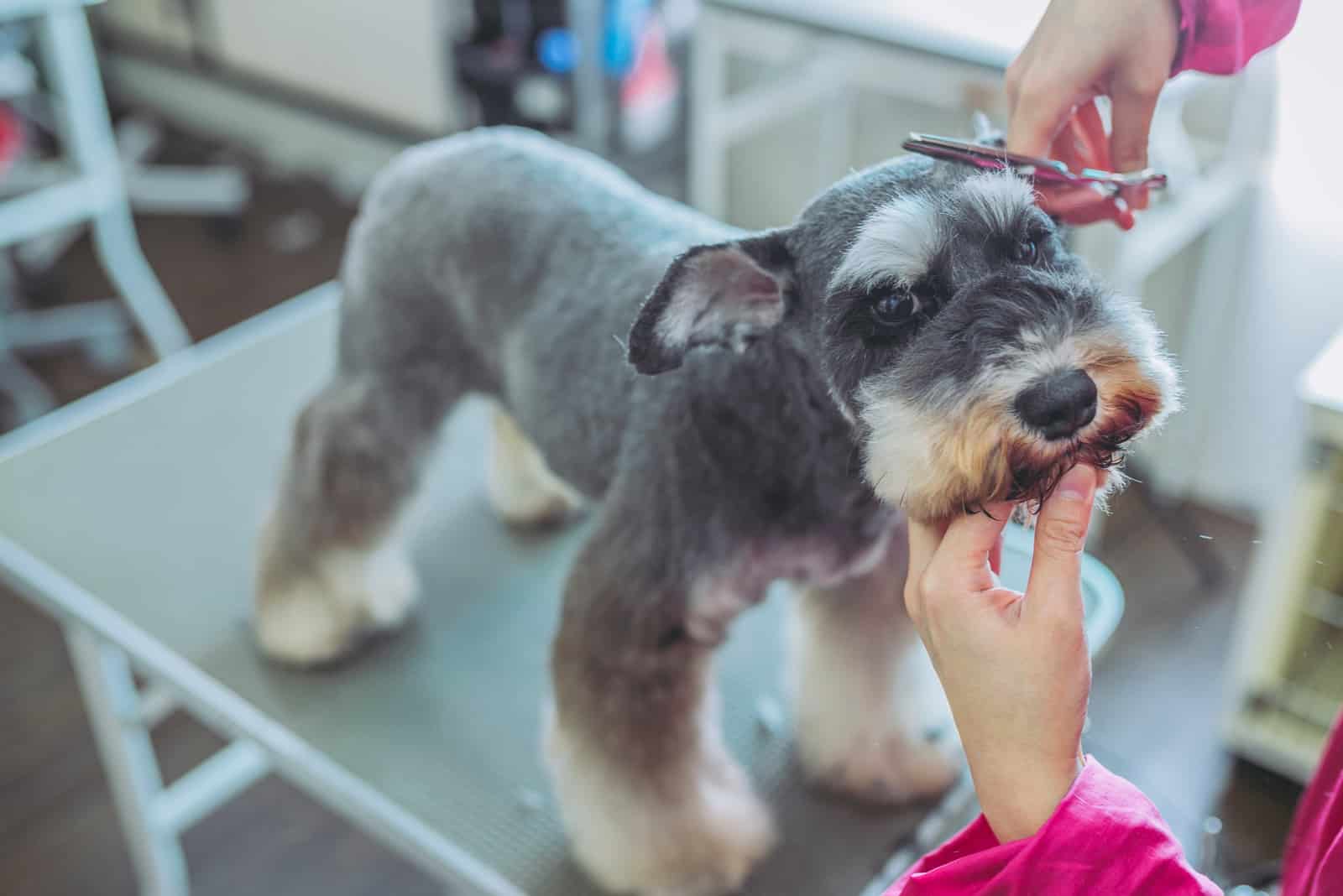
If you want to reduce the chances of aggravating pet allergies, you’ve made the right choice in the Schnauzer. If you wish to double down on this, then try some of these tips:
• Regular vacuuming – you could invest in a special pet-hair vacuum cleaner, but to be honest, a good quality brand will do the trick. It’s more the frequency of cleaning that will keep any stray hairs under control.
• Regular bathing – your dog, that is, not you! Some experts suggest weekly bathing for your dog, but if you notice that their skin is drying out, then leave a longer break between baths and try a different shampoo, as some dogs have sensitive skin. On balance, it might be better to limit bathing to once a month and only use good-quality branded shampoo that is designed for this breed.
• Regular grooming – by far the best means of controlling dog hair, a good brush twice a week with a round-bristle brush should suffice. Make sure to brush that mustache and give it a wipe. Check their ears and eyes, brush their teeth and give them a good pampering session! It’s a good idea to start this routine when they are young, to get them used to the process and make things easier should you want to employ a professional groomer later on.
• Give them a healthy diet – proper nutrition is essential for a healthy coat and skin. Only use good-quality dog food and keep treats to a minimum. Table scraps are the best route to a sick dog, as they will be in danger of obesity and health problems such as pancreatitis. With a bad diet, the coat becomes dull, and the skin will be in bad condition, leading to more hair loss and dander.
With that said, there are certain human foods that are safe and beneficial for our furry friends. You can supplement your dog’s diet with foods such as tuna, jicama, artichokes, cilantro, and durian to give them the necessary nutrients their bodies need.
Are Miniature Schnauzers Hypoallergenic?
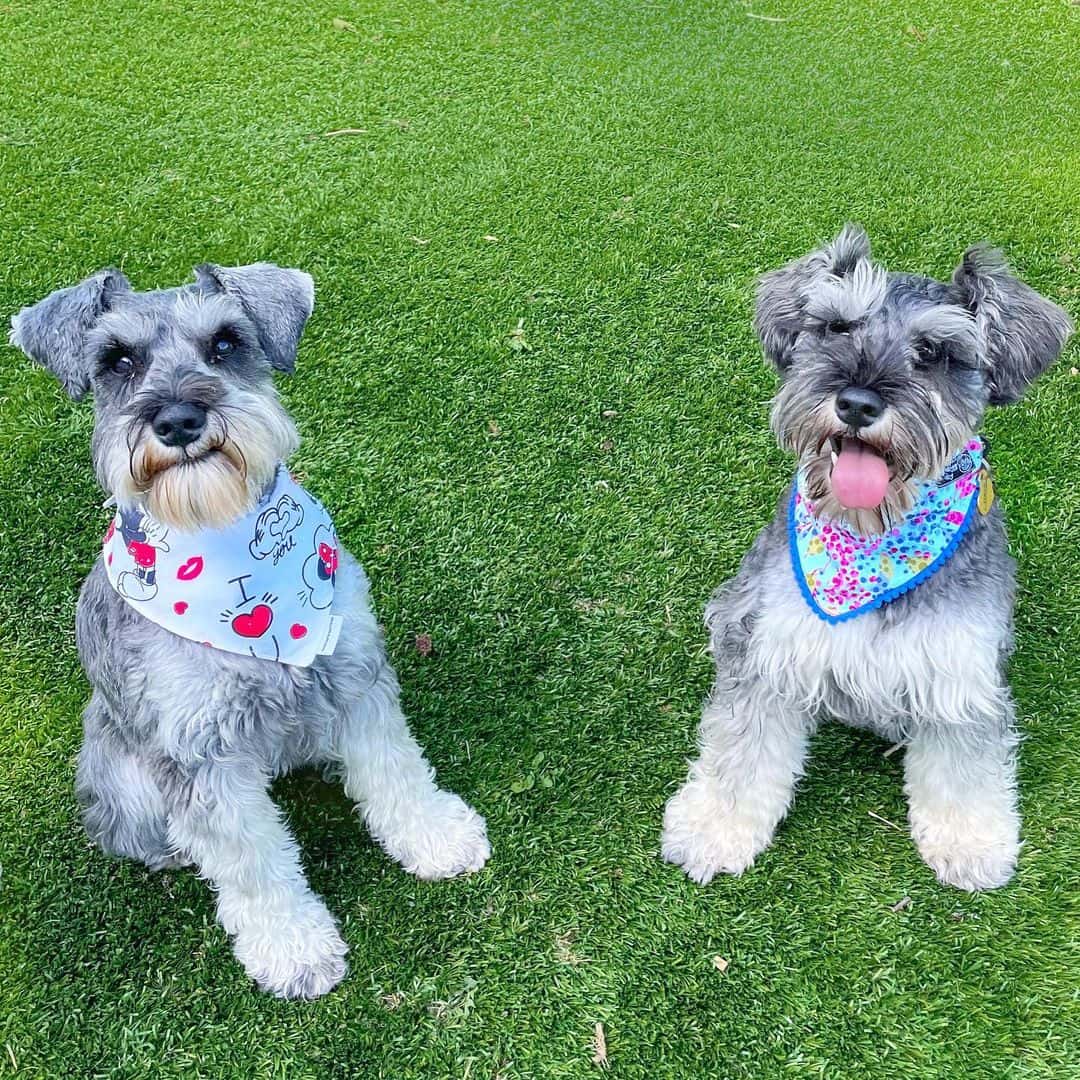
Photo from: @millie_and_thebeard
Seeing as Mini Schnauzers are no different from their larger counterparts in terms of their low-shedding coat, yes, they are hypoallergenic!
Apart from their size, they are identical in every way. They love cuddles, and they are playful and a little mischievous, but on the whole, they are alert, obedient, and friendly.
When it comes to grooming, their small size makes the task just that little bit easier.
Related: Teacup Miniature Schnauzer—The 411 On This Adorable Dog Breed
Are Giant Schnauzers Hypoallergenic?
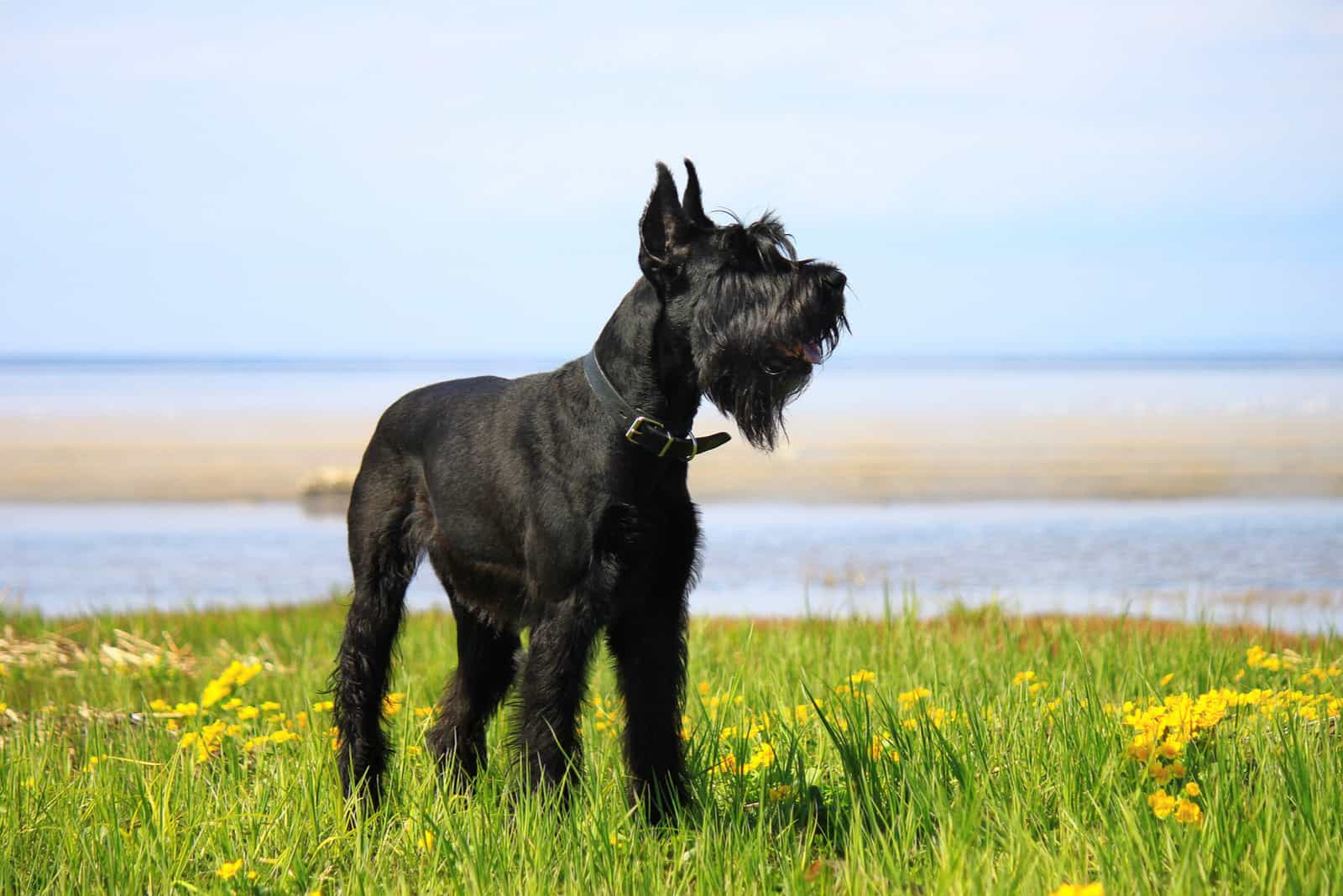
You can probably guess the answer to this one! Just as with the smaller versions, these lovable pooches have the same hypoallergenic qualities.
Don’t be fooled by that name. They are pretty large but not exactly a giant. This name is used as a comparison to the standard and mini versions. Obviously, as it’s a bigger dog, it will take longer to brush. But there’s something about this larger breed that has an almost regal bearing. When they’re all brushed and trimmed, with a beautiful shiny coat and their tail curled back over the haunches, they look super impressive!
See Also: 10 Best Giant Schnauzer Breeders In the USA
Do Schnauzers Make Good Family Pets?
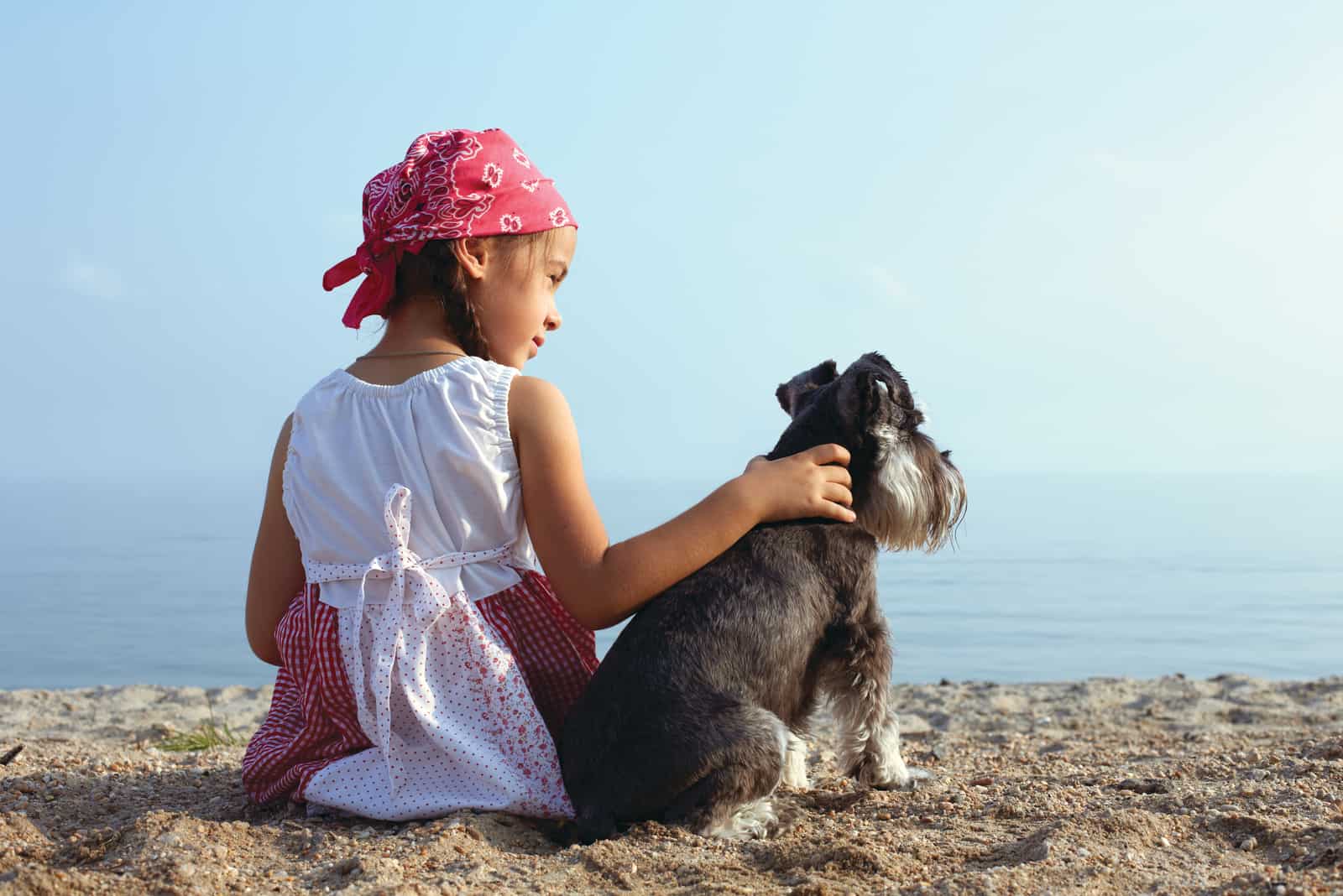
They make great family pets! They are amiable, loyal, and aren’t naturally aggressive. They do like to bark and have been known to nip when in pain or when provoked. This is something that has been bred into them back in the days when they were used on farms. Their guard dog instincts are strong, and they will bark at the slightest thing. Nipping is another matter, and if it isn’t checked, it may escalate to biting.
Both behaviors can be controlled through training, although you shouldn’t be too worried about barking as it is their natural way of communicating with you. Training should begin as soon as possible when they are young. This should include socialization so that they become used to the presence of other animals and people.
Some dogs will still retain a high prey drive, even after training, so you should always take care when small pets are around.
This is a generally healthy breed but seems to be particularly vulnerable to viral and bacterial infections, though most of these can be prevented through vaccinations. Other conditions can be avoided by using a reputable breeder, as they’ll have a health screening program in place.
The amount of exercise depends on which size you go for. The Mini Schnauzer will need about 30 minutes a day, whereas the Standard and Giant Schnauzer will require at least an hour or more.
It’s best to split the exercise into two or three sessions and allow them to run free. All of these breeds need mental stimulation to satisfy their natural intelligence.
Swimming, frisbee, weight pulling, fetch, and stair climbing are all great exercises that will burn energy, improve stamina, and build muscle. Puzzle toys, chew toys, and learning tricks are good methods of providing mental stimulation that challenges them and tests their problem-solving skills.
A dog that has enough mental and physical exercise is a generally happy dog. It will have fewer health issues, which is great news, but will also be less likely to develop behavioral problems. This is helpful when you need to leave the dog alone. A bored dog with excess energy will probably resort to destructive behavior and become very unhappy. It’s in your best interests to make sure they use up all that energy as well as exercise their brains!
What Have We Learned?
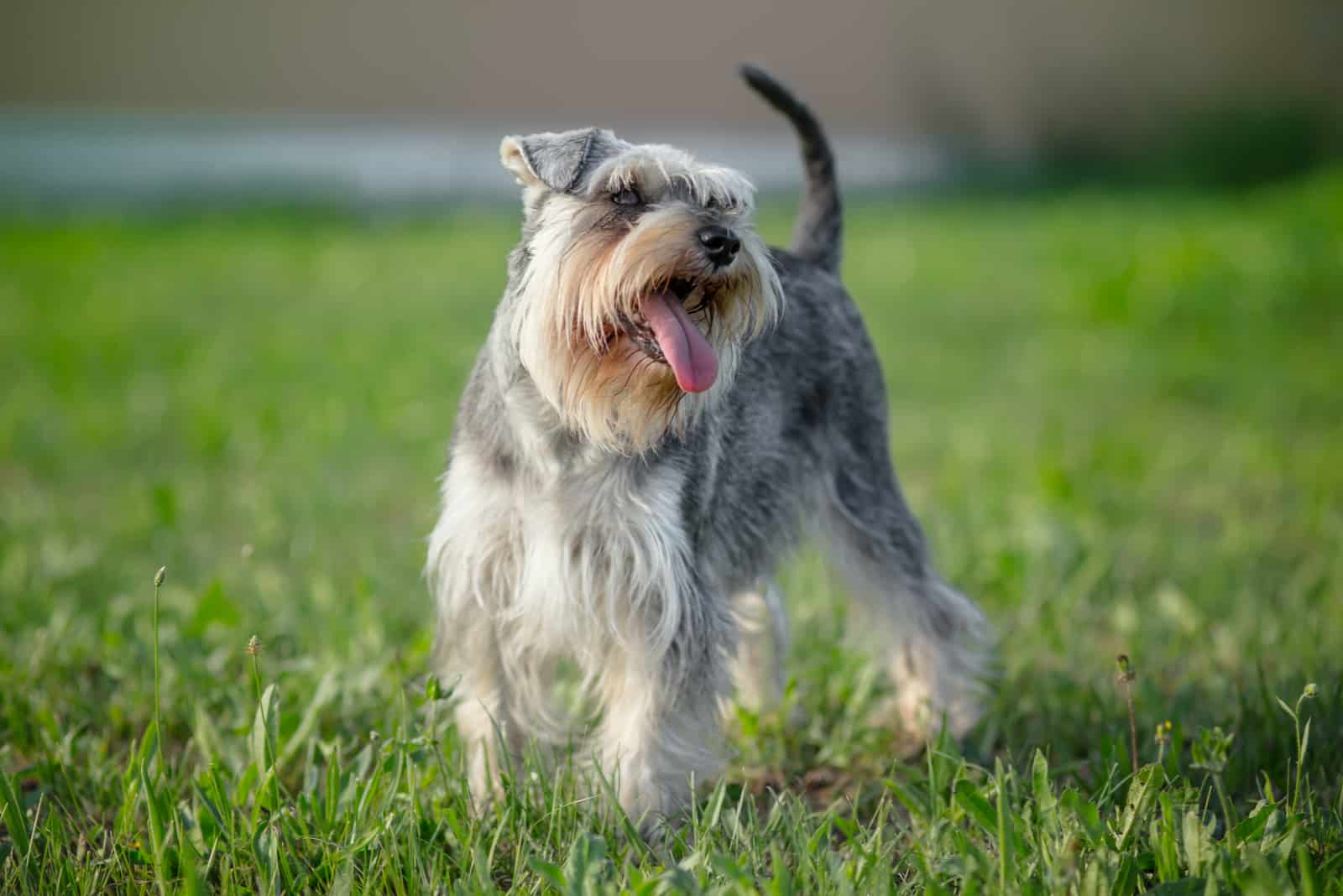
We began by asking, Are Schnauzers hypoallergenic?
And we discovered that they are, though we have to be sure that we understand exactly what that means. It isn’t that there is zero chance of experiencing an allergic reaction; it’s just less likely.
We’ve also learned that we can help ourselves in the way we care for our dogs.
By keeping them healthy and well-groomed, which is what any responsible dog-lovers would do anyway, we can reduce the amount of hair and dander in our homes.
Read Next:
• 9 Reasons Why Schnauzers Are The Worst Dogs
• Schnauzer Terrier Mix: A Proud Dog Breed With A Suitable Attitude
